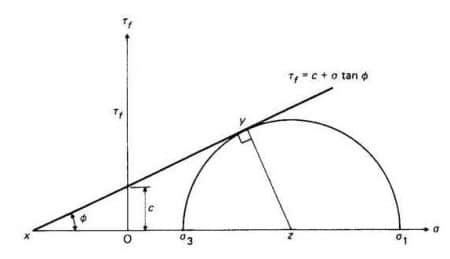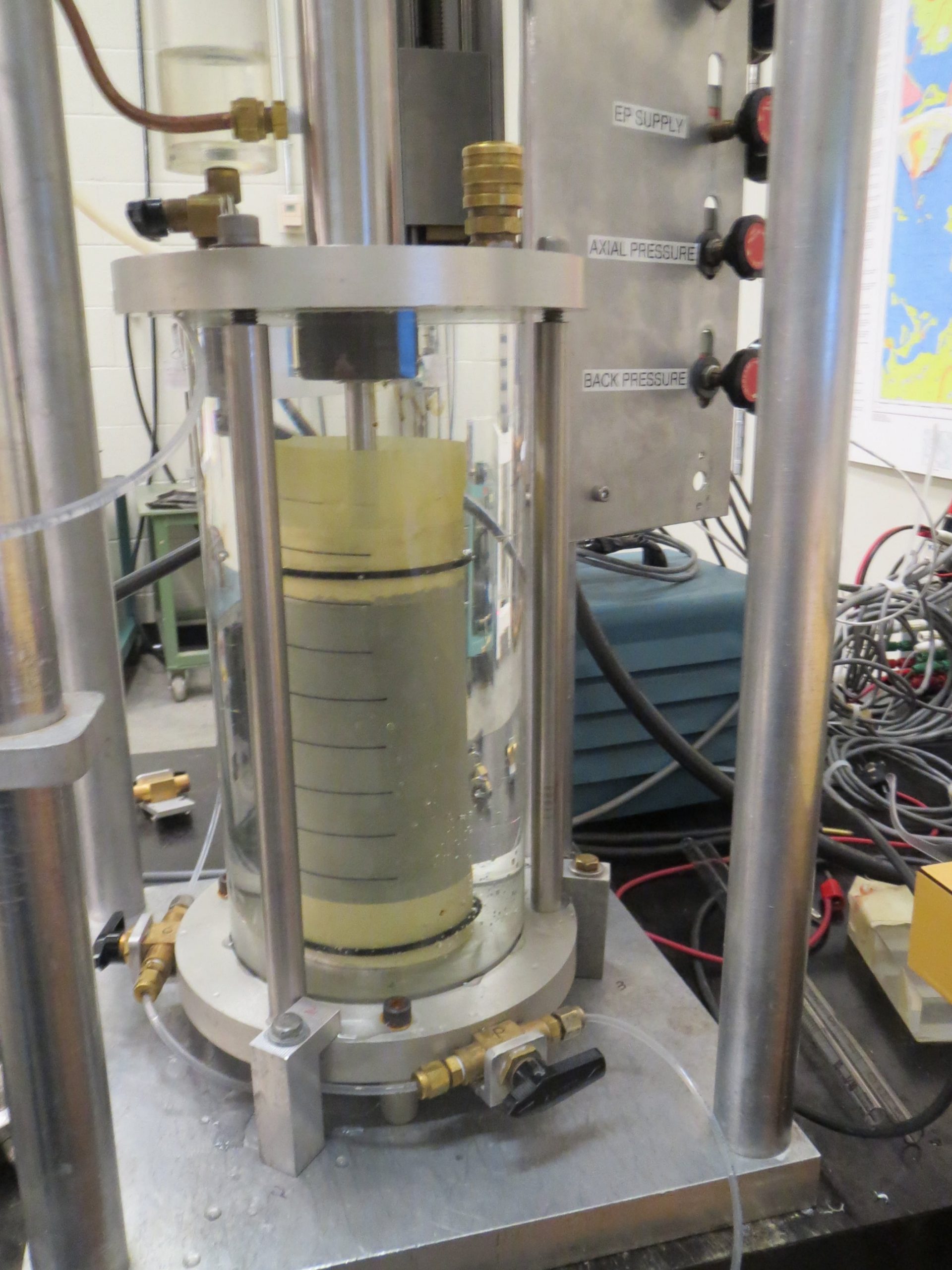Table of Contents
1. Introduction
Triaxial Shear Test can be defined as the test that is conducted to assess the mechanical properties of soil. These mechanical properties include shear resistance, cohesion, and dilatancy stress.
The tri-axial shear test is a commonly adopted soil test as the test is suitable for all types of soil.
This test was first developed by Casagrande to overcome the drawbacks of the direct shear test.
The triaxial shear test is more versatile and the drainage conditions can also be well controlled.
Triaxial shear test on soil includes the process of subjecting the soil sample to stress such that the stress resulted in one direction will be different in perpendicular direction.

Figure: Triaxial Shear Test Schematic Diagram
2. Apparatus Required in Triaxial Shear Test
1. Triaxial Testing Machine:
The triaxial testing machine must be complete with a tri-axial cell.
The tri-axial testing machine consists of units that have the provision of inserting a cylindrical soil sample that is enclosed by rubber membranes to restrict the entry of lateral fluid.
A piston arrangement is also provided to apply the vertical stress and radial fluid pressure.
A drainage arrangement is also made to prevent the drainage of the specimen.
A pressure gauge is also provided for measuring the fluid pressure in the cell.
2. Equipment for loading
3. Load and Deformation Measuring Equipment:
A dial gauge is generally provided for the measurement of the deformation of the specimen. Load application is measured by proving.
3. The procedure of Triaxial Shear Test
The test procedure of the triaxial shear strength of soil can be divided into three main types which are explained as follows:
1. Unconsolidated Undrained Test
In the unconsolidated undrained shear test, the sample of soil is subjected to pressure without any drainage provisions.
The pressure in the cell is maintained at a constant value.
The deviator stress is applied and increased rapidly until failure of the specimen occurs.
The unconsolidated undrained test is commonly known as the quick test.
2. Consolidated Undrained Test
Unlike the unconsolidated undrained test, in this test, the sample is subjected to pressure with appropriate drainage provisions.
The deviator stress is continuously applied while keeping the cell pressure constant with no further arrangement for drainage.
3. Consolidated Drained Test
In the consolidated drained test, the deviator stress is increased while facilitating the drainage.
The cell pressure imposed is also kept constant.
It must be noted that the rate of loading is slow to prevent the development of excess pore pressure within the sample.
The method includes enclosing the membrane in an envelope and positioning it in the tri-axial cell.
Then, the lateral pressure is applied and the vertical deformations and load readings are duly recorded.
4. Calculations in Triaxial Shear Test

Where,
![]() = total vertical stress
= total vertical stress
![]() = all-round lateral pressure
= all-round lateral pressure
![]() = applied deviatoric stress
= applied deviatoric stress
Mohr’s rupture envelope is obtained by drawing the tangent to the circles obtained.
The tangent will intercept at the y-axis.
The y-intercept will give the value of cohesion (C).
The slope of the failure plane or the tangent line will give the angle of internal friction of the soil ( ø).
The loading can increase the cross-section of the soil specimen.
This will require a correction for the deviatoric stress ![]() .
.
Here, the correction is applied by assuming that the volume of the specimen remains constant and the area varied.
The corrected deviatoric stress is

P1 = Applied Load
Ao = Original Area of cross-section
l0 = Specimen Original length
l = deformation of the specimen

Then, Mohr’s circle is plotted and shear stress is calculated as follows:
The shear resistance of the sample is given by:

5. Advantages of Triaxial Shear Test
Some of the advantages of the triaxial shear test on soil can be listed as follows:
1. This test allows the specimen to fail on the weakest plane.
2. The stress distribution on the plane of failure is uniform.
3. The drainage conditions can be controlled.
4. The changes in the pore pressure, as well as the volumetric changes, can be directly measured.
5. The Mohr’s circle can be drawn for any shear condition and stage.
6. This test is suitable for all types of soil and it is highly desirable for research works.
6. Disadvantages of Triaxial Shear Test
Some of the disadvantages of the triaxial shear test on soil can be listed as follows:
1. The strain conditions are generally not uniform.
2. The consolidation of the soil sample in the test is isotropic but in actual practice it is anisotropic.
| Read Also: Core Cutter Test |


